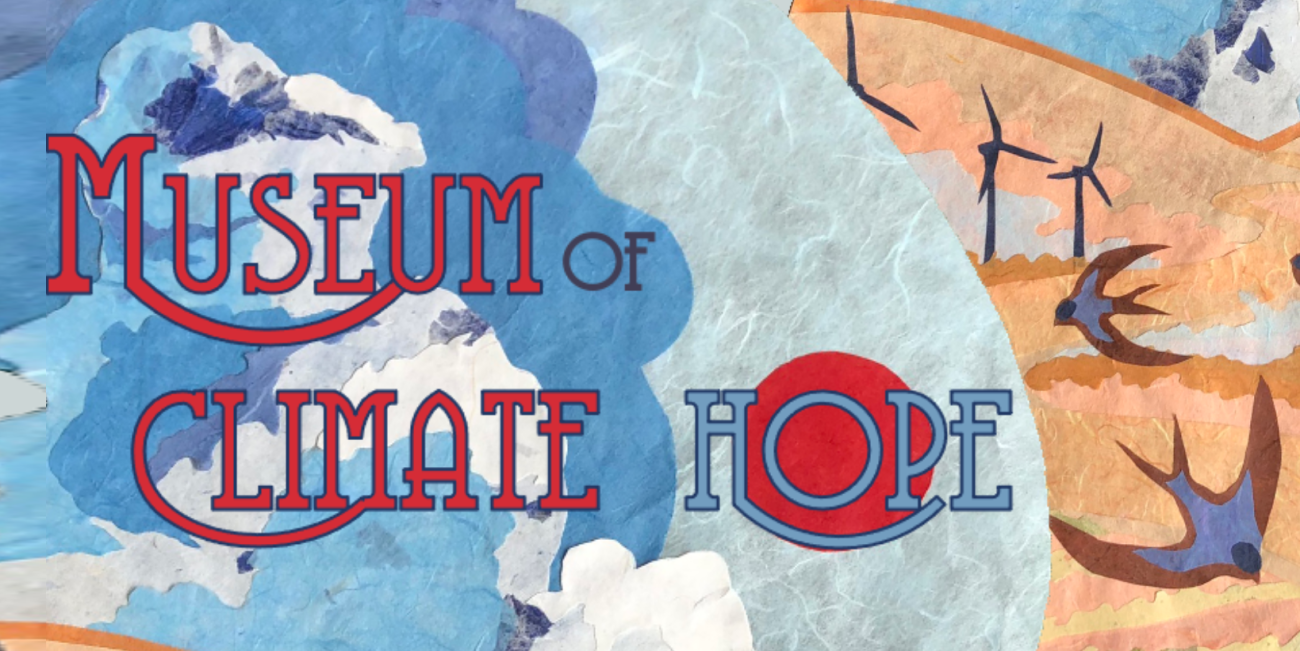Join us for a tour of the Museum of Climate Hope, a unique museum trail and interactive experience across all six of Oxford’s Gardens, Libraries and Museums (GLAM) that cultivates climate hope by reframing the stories of real artefacts around the themes of resilience, innovation and transformation.
This July, the Climate Education Lab in the Environmental Change Institute in the School of Geography and the Environment have launched a new digital trail to highlight positive steps to address climate change anxiety by reframing the stories of real artefacts.
In 2021, a survey (Hickman et al, 2021) of ten thousand young people aged 16-25 across 10 countries found 59% were very or extremely worried and 84% were at least moderately worried. More than 50% reported each of the following emotions: sad, anxious, angry, powerless, helpless, and guilty.
ECI's Bill Finnegan, the project’s creator, said:
Following research I carried out last year on climate education, I became increasingly interested in the concept of hope, and how educators can help young people navigate the space between disengagement and despair. Each artefact featured in this trail tells its own story based on what we know about the item, but with a twist – through the lens of environmental change. This long-term view on the relationships between people and the natural world provides an important perspective on current environmental challenges, as well as models for how to navigate them."

When visiting the museums, gardens and libraries in Oxford, look for labels with the Museum of Climate Hope and a QR code. Use your smartphone camera to scan the QR code, click-through, and view supplemental digital content such as images, text, videos. You can also access this content from your classroom or home by following the link climatehope.uk The digital content includes resources for educators and opportunities for young people to share the objects and stories that give them hope when it comes to climate change.
Bill said: "If you’re looking for something different to do with children this summer, this gives them the opportunity to think and talk about environmental change, but also to see that the world does care and they can be instrumental in making a difference, and there is positivity ahead."
Dr Tina Fawcett, Senior Researcher and Associate Professor at the ECI, explains: "This trail highlights sources of hope in the climate emergency. It also links to current research at the university which is helping to understand and reduce the risks from climate change."
Anya Gleizer, Human Geography DPhil student at the School of Geography and the Environment, who has illustrated the trail, said: "In this new, trying era of climate chaos, we are called to put all our human qualities (our ingenuity, our creativity, our technology, and our compassion, compassion perhaps most of all) to the ultimate test of survival."
Six of Oxford’s museums have come together, along with Rumble Museum at Cheney School in Oxford, to create the interactive, fun and educational activity which can be completed in person, online, or a mixture of both. Visitors will learn more about the artefacts but also life at that time, through multimedia storytelling from Oxford researchers, museum staff and young people.
What is known about the historical items is combined with what was happening in the world at that time and the experience shows that hope, resilience, transformation and innovation have been around a long time and are key to protecting our world. The trail is particularly aimed at key stages 2 and 3 (ages 7-14) and for teachers bringing primary and secondary school groups to the Oxford museums. Multimedia content will then also be shared digitally for schools to use in their classrooms after their visit.
Young people were involved as much as possible in designing the project. Children and sixth formers from Cheney School helped choose which exhibits to display and researched the stories behind them. Others helped film the artefacts for the videos, making the trail digitally interactive. Items were identified and stories created thanks to the student organising committee of the Oxford Schools Sustainability Network and Members of the Oxford Museum of Natural History’s Youth Forum
All partners involved in the trail have worked together to co-create the activity and will evaluate the learning experience to aid future research into environmental issues.
Entry to all the museums and Weston Library is free. Entry to Oxford Botanic Garden is free for children under 16, but there is an admission charge for adults. Please check the Oxford Botanic Garden website for more information.
- Find out more about the Museum of Climate Hope Trail online


